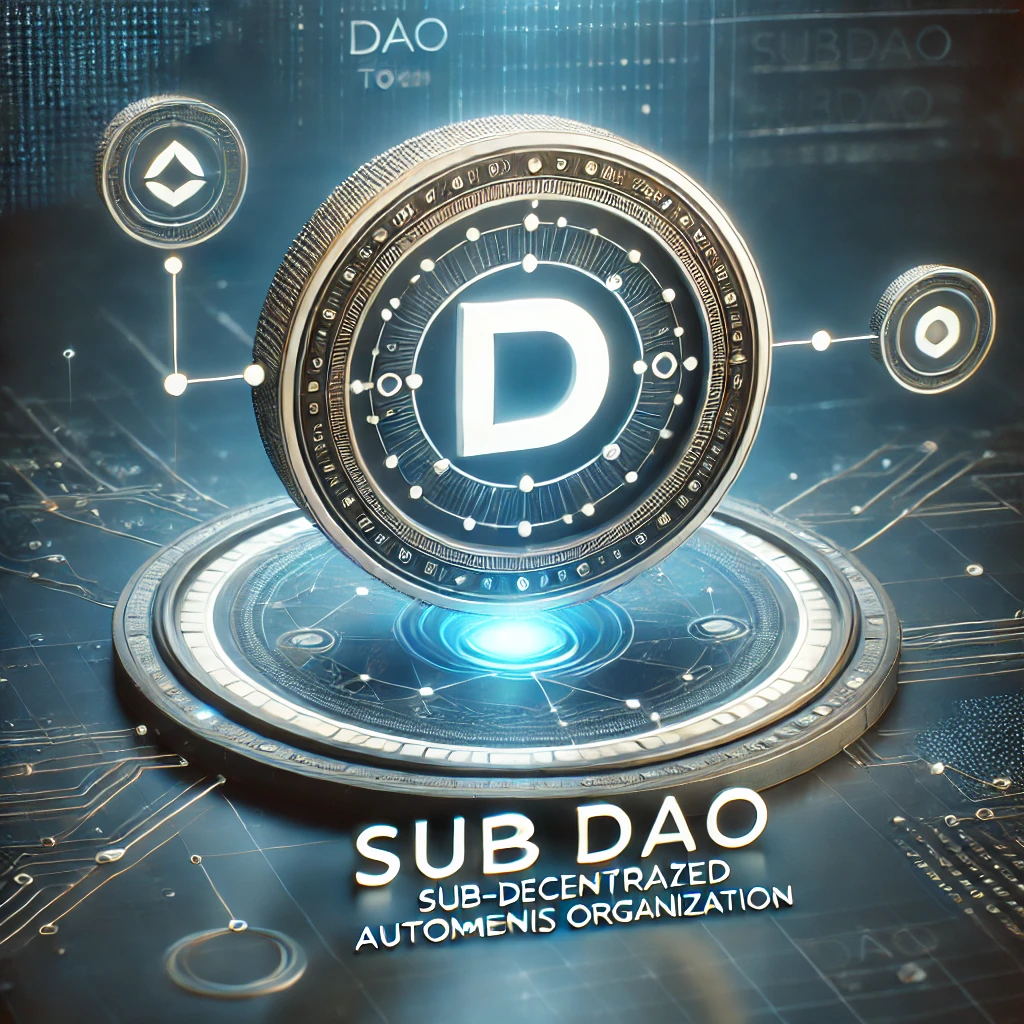- Shared Mission and Governance Alignment
- If the new initiative is aligned with the overarching mission and goals of the original DAO and you want to maintain some level of centralized governance oversight, a subDAO is ideal. The subDAO would operate semi-independently but still be closely tied to the original DAO in terms of mission, vision, and values.
- Example: If the original DAO focuses on decentralized finance (DeFi) and wants to create a subDAO to focus on managing liquidity pools or specialized staking, the subDAO would still share the same overarching DeFi mission but handle its own operational tasks.
- Funding and Resource Sharing
- A subDAO allows for funding, resources, and expertise to flow more easily between the main DAO and the subDAO. If the main DAO is expected to provide significant funding or other resources to the new entity, a subDAO is often the more practical choice, as it simplifies budget allocation and accountability.
- Example: A DAO with a large treasury might create a subDAO to manage specific community grants or development funds, ensuring that the main treasury can easily distribute resources without creating an entirely separate entity.
- Governance and Accountability
- SubDAOs allow for hierarchical accountability while still maintaining decentralization. If you want the new entity to have some independence in operations but still be accountable to the main DAO, a subDAO structure makes sense.
- Example: If the main DAO wants to oversee strategic direction or treasury management while delegating day-to-day operations to a subDAO, this ensures alignment without micromanagement.
- Maintaining a Unified Brand
- If branding and reputation management are important, a subDAO can operate under the umbrella of the original DAO’s brand, benefiting from its reputation and community trust. A subDAO can leverage the main DAO’s network and branding while focusing on more specific initiatives.
- Example: If the main DAO has a strong community following and wants to expand into different geographical regions or product offerings, subDAOs would allow the brand to stay unified while expanding its scope.
- Operational Complexity but Shared Vision
- If your original DAO is becoming operationally complex and needs to split into more focused teams or initiatives without losing the coherence of the parent DAO’s overall mission, a subDAO structure is beneficial.
- Example: A DAO focused on decentralized governance might create subDAOs to manage different working groups (e.g., research, development, marketing) while keeping these subgroups tied to the parent DAO’s overarching goals.
When to Create a Second DAO:
- Distinct or Divergent Mission
- If the new initiative or project has a fundamentally different or evolving mission from the original DAO, creating a separate second DAO is the better option. This allows for full autonomy and the flexibility to pursue goals that may not be fully aligned with the original DAO.
- Example: If the original DAO is focused on DeFi and you’re launching a completely new project related to NFTs or social governance, creating a second DAO allows you to build a distinct community and governance structure tailored to that new vision.
- Full Autonomy and Decentralization
- A second DAO is ideal when you want the new entity to have full autonomy with independent decision-making and governance. If you want no dependence on the original DAO for funding, resources, or oversight, a separate DAO is the way to go.
- Example: If the new initiative requires its own governance tokens, voting structures, or even treasury management, a second DAO can develop independently without being constrained by the parent DAO’s governance system.
- Different Governance Models or Tokenomics
- If you need a fundamentally different governance model or tokenomics, a second DAO makes more sense. This might involve issuing a new governance token, implementing a different voting system, or creating new economic incentives that are incompatible with the original DAO.
- Example: If your original DAO uses a quadratic voting system and your new project requires a different token distribution or voting system (e.g., liquid democracy), creating a separate DAO gives you full freedom to experiment with new governance mechanisms.
- Legal or Regulatory Considerations
- If there are legal or regulatory differences between the original DAO and the new initiative, a separate DAO may be required to ensure compliance. Different jurisdictions or activities may require distinct legal structures or regulatory approvals.
- Example: If the original DAO operates in the DeFi space, but the new initiative involves tokenized real-world assets, creating a separate DAO may help in navigating different regulatory landscapes, including licensing or compliance needs.
- Separate Community and Culture
- If the new initiative is aimed at building a different community or culture, creating a second DAO is appropriate. This allows for the development of a distinct group of contributors, voters, and participants who are passionate about the new project without needing to align with the original DAO’s community dynamics.
- Example: If the original DAO has a DeFi-focused community and you are starting an initiative in social impact or gaming, you might need to create a second DAO to engage a new audience with different interests and expertise.
- Independent Revenue Streams
- When the new initiative is designed to operate independently with its own revenue model, a second DAO can help build a clear distinction between financial streams, allowing for better transparency and accountability.
- Example: If the original DAO generates revenue from staking and liquidity pools, but the new initiative plans to earn revenue from royalties or product sales, creating a second DAO can provide clearer financial separation and management.
Summary of Key Differences:
| SubDAO | Second DAO |
|---|---|
| Shares the main DAO’s mission and vision | Has a distinct or different mission |
| Maintains some governance alignment | Operates with full governance autonomy |
| Easily shares resources, funding, and branding | Operates with separate treasury and funding |
| Remains accountable to the main DAO | Functions independently without oversight |
| Useful for delegating specialized tasks | Ideal for building a completely independent project |
| Centralized branding and community | Builds its own brand and community |
In summary, create a subDAO when you need operational independence but still want the new entity to align with the original DAO’s goals, share resources, or remain accountable. Opt for a second DAO when you require full autonomy, a separate mission, different governance, or distinct legal structures.




